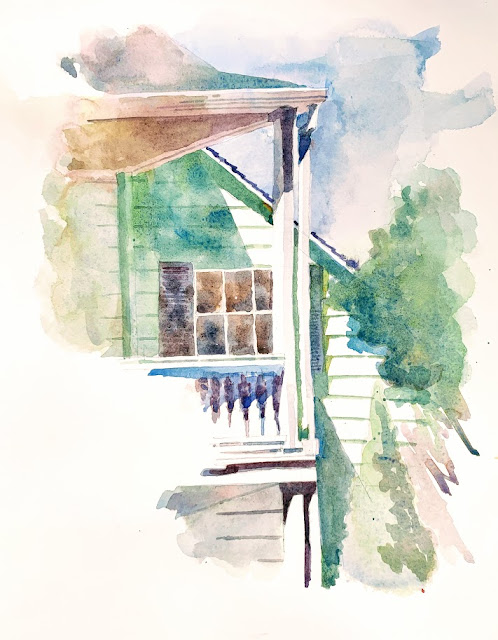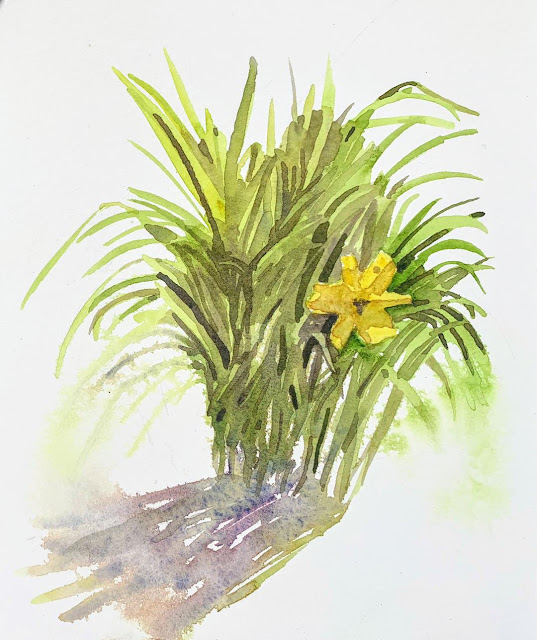Studies

Sometimes, after a series of studies, a bigger painting just doesn't work out. It is discouraging, but if it stays in my mind as a composition, for the shapes or the color palette, even for the name I may already have given it (!), then it deserves to be tried again, maybe after a few days or weeks. This is a lovely temple - San Jose Buddhist Church Betsuin - that I have painted before. In this view, I envisaged the temple in mostly cool neutrals offsetting a monk coming down the steps, dressed conveniently and complementarily in orange, with an orange umbrella. I did a few studies - here they are. The larger painting (not shown) didn't work out - I think impatience was the reason, or perhaps pressure to succeed. Both terrible ingredients. When it does happen, it will be called "Walking Meditation."













